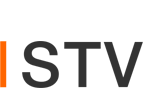MYCELIUM BUILDING
Mycelium is inextricably linked to a sustainable consumer society. This highly energy efficient organism will play a role in various sectors as a binder, packaging, textile or building material. For the Veenweide Atelier, part of Triennial Arcadia, STV developed a protocol in which plant fibers can be glued with mycelium. Important goals are: using fibers from crops from wet cultivation, being able to grow and dry with minimal energy consumption, and everything must be feasible within the operational setting of a livestock farmer. The common method of inoculation involves sterilization and working as sterilely as possible to avoid contamination of the material with other fungi and bacteria. However, this is impossible if this has to be introduced as a new agricultural activity on the farm and that is why STV has mainly focused on developing a protocol where sterile working is not necessary.








